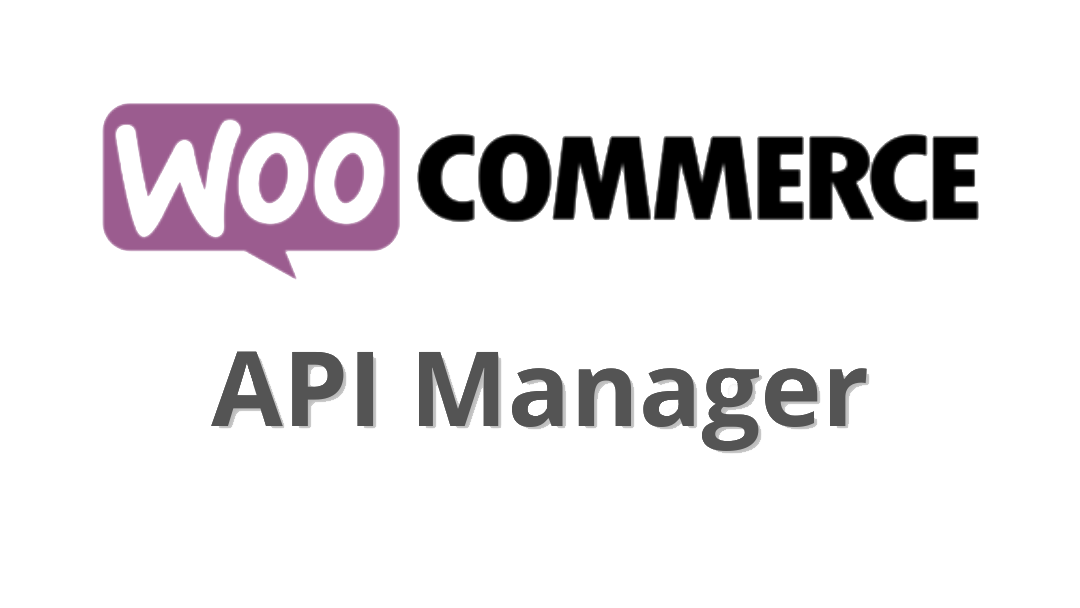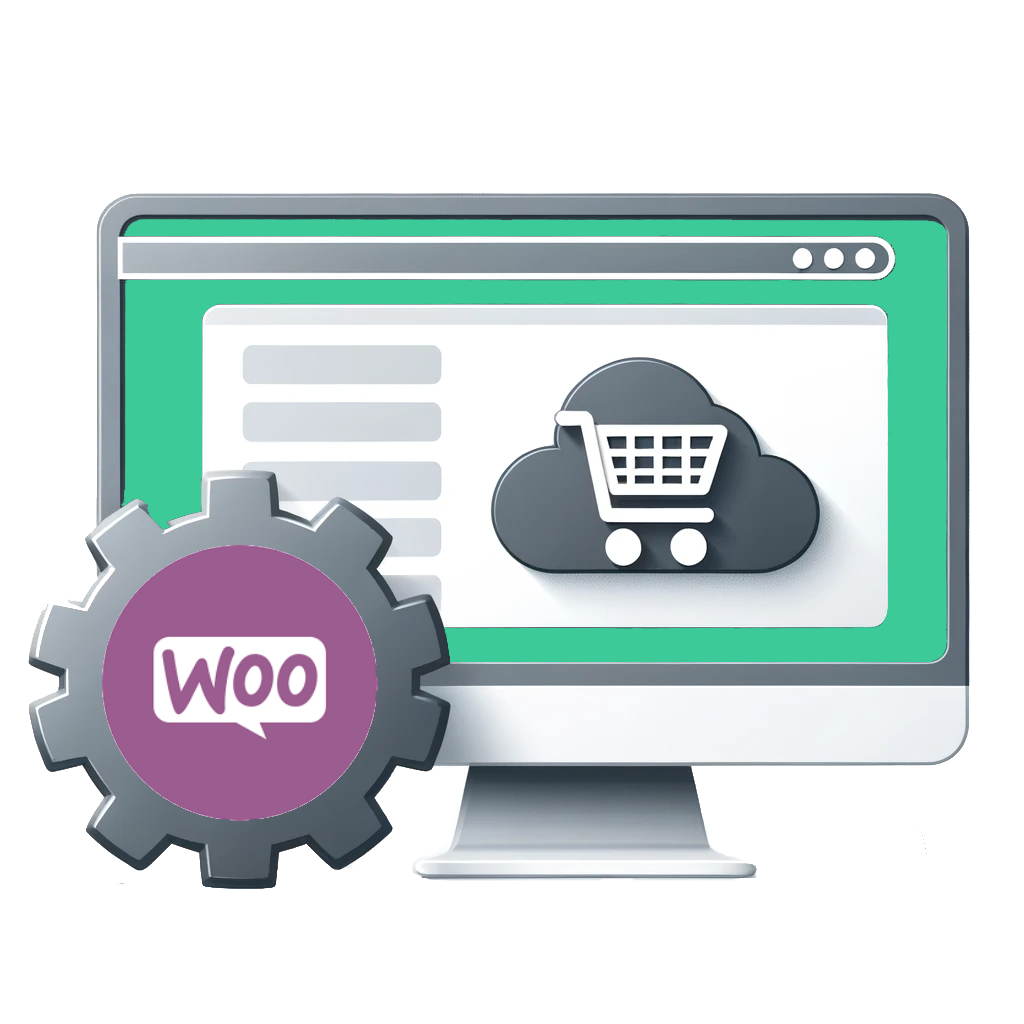Table of Contents
Welcome back to WordPress Whispers! As WooCommerce continues to evolve, developers and store owners alike face the increasing need to understand the significance of its API versioning and updates. Today, let’s explore the latest changes in the most recent and upcoming WooCommerce versions, especially with the upcoming introduction of the WooCommerce Legacy REST API extension.
WooCommerce, a leading e-commerce platform for WordPress, has always consistently upgraded its features to provide a seamless experience for its users. Among these developments, the management and versioning of their API plays a crucial role. API versioning is important in ensuring backward compatibility, preventing disruptions in existing integrations, and introducing new features without affecting the current system’s stability.
In June, the release of WooCommerce 9.0 will introduce a significant change – removing the Legacy REST API from the core plugin. Since version 2.6, this Legacy REST API offered an HTTP REST interface for accessing store data. To mitigate the impact of this removal on sites and plugins that still depend on it, WooCommerce introduced a dedicated Legacy REST API extension. This extension restores the full functionality of the removed Legacy REST API code in WooCommerce 9.0 and later versions. However, it’s crucial to note that this extension does not support High-Performance Order Storage (HPOS), a more efficient way of storing order data introduced in WooCommerce 8.2.
Currently, WooCommerce 8.5 includes a mechanism to detect and log when applications hit the Legacy REST API endpoints. This feature is particularly helpful for users unsure whether their site relies on the Legacy API.
It’s essential for developers and store owners using WooCommerce to keep up with these updates. While the Legacy REST API extension serves as a temporary solution, the recommendation is to migrate to the currently supported REST APIs. For those interested in the technical aspects, WooCommerce provides detailed documentation on its REST API, including how to generate API keys, test the API, and enable the legacy REST API.
By staying informed and preparing for the future, you will ensure your WooCommerce store continues to run smoothly and efficiently.

Managing WooCommerce Versions with the WooCommerce API Manager
The WooCommerce API Manager is a crucial tool for developers, product managers, and store owners who use WooCommerce. It plays an essential role in efficiently managing digital products and software licenses, making it an indispensable part of WooCommerce’s ecosystem.
The Role and Features of the WooCommerce API Manager
- License Key Generation and Management: The API Manager automates the process of generating and managing license keys for software products, which is essential for any store selling digital products like software, themes, or plugins.
- Software Updates and Distribution: It facilitates the seamless distribution of software updates to customers. This feature ensures that customers always have access to the latest versions of their purchased products.
- Activation and Deactivation Tracking: The API Manager tracks the activations and deactivations of software, helping store owners understand usage patterns and enforce license agreements.
- Integration with WooCommerce Subscriptions: For products that require regular updates or are sold on a subscription basis, the API Manager integrates seamlessly with WooCommerce Subscriptions. This offers a streamlined experience for recurring payments and license renewals.
Support Policy and Implications for WooCommerce Users
The WooCommerce API Manager follows WooCommerce’s general support policy, focusing on compatibility with the latest WooCommerce versions. This approach ensures that the API Manager aligns with the newest features and security updates of WooCommerce. However, this also means that users must regularly update to the latest WooCommerce versions to maintain full compatibility and functionality.
For store owners and product managers, this translates into a need for proactive management of your WooCommerce installations. Keeping up with the latest WooCommerce versions is hugely beneficial in terms of security and new features. It additionally ensures that your API Manager continues to function effectively.
For developers, this scenario underscores the importance of testing your products against the latest WooCommerce versions regularly. This practice ensures compatibility and a smooth experience for your customers.

Store API Compatibility Across WooCommerce Versions
The Store API in WooCommerce is a robust tool that significantly enhances the e-commerce experience for developers and store owners. Its stability and support for cart operations are vital for the smooth running of online stores.
Store API and Its Stability
- Support for Cart Operations: The Store API allows seamless interactions with the shopping cart. It enables adding items to the cart, updating quantities, applying coupons, and checking out. The API’s stability ensures these operations run smoothly, enhancing the user experience.
- Non-Authenticated Access: It provides unauthenticated access to certain store data like products. Quite useful for creating custom storefronts and streamlined shopping experiences.
- Integration with Blocks: The Store API is used extensively by several WooCommerce Blocks, allowing for more dynamic and interactive front-end experiences.
Integration Concerns
- Plugin Compatibility: One of the concerns with the Store API involves its integration with existing plugins. Developers must ensure that their plugins are compatible with the API. This is especially true for key e-commerce functionalities, like payment processing and inventory management.
- Payment Method Integration: The integration of payment methods with the Store API can be complex. For example, payment gateways like Stripe or PayPal need specific integration to handle payment data through the API. Following WooCommerce’s guidelines for gateway integration is crucial for ensuring a seamless checkout experience.
- Customization and Extensibility: The Store API allows for customization and extension, but this requires a good understanding of the API’s structure and capabilities. Developers should utilize the API’s flexibility responsibly to maintain the integrity and performance of the store.
Best Practices
- Stay Updated: Keeping your WooCommerce installation updated ensures you’re using the most stable version of the Store API.
- Test Integrations: Regularly test your store’s plugins and payment methods for compatibility with the latest API version.
- Leverage Documentation: Utilize WooCommerce’s extensive documentation to understand the Store API’s capabilities and limitations.
The Store API is a powerful tool in the WooCommerce suite, offering stability and support for essential e-commerce operations. Adhering to best practices and staying informed about updates can ensure a smooth, efficient, and secure online shopping experience.

Overcoming Legacy REST API Challenges with WooCommerce HPOS
The introduction of High-Performance Order Storage (HPOS) in WooCommerce v8.2 truly changed the game, in terms of performance and data management. However, it also presents notable challenges, especially concerning the Legacy REST API.
Challenges with the Legacy REST API
- Incompatibility with HPOS: The Legacy REST API, built for earlier WooCommerce versions, primarily uses
wp_postsandwp_postmetatables for data storage. This approach is significantly different from HPOS, which uses custom tables like_wc_orders,_wc_order_addresses,_wc_order_operational_data, and_wc_orders_meta. The HPOS tables are designed for efficient handling of e-commerce data, optimizing performance for high transaction volumes. - Transition to WooCommerce 9.0: With the rollout of WooCommerce 9.0, the Legacy REST API will move to a dedicated plugin to manage the incompatibility with HPOS. This segregation ensures that the core functionality of WooCommerce, now integrated with HPOS, remains unaffected by the limitations of the Legacy API. Users dependent on the Legacy REST API are recommended to adopt this extension to preserve their existing workflows, while transitioning to the newer, supported APIs.
Importance of Migrating to Supported APIs
- Accessing Enhanced Features: Transitioning to supported APIs is crucial for leveraging the benefits of features like HPOS. This ensures that your WooCommerce store can handle increased transaction volumes efficiently.
- Maintaining Security and Performance: Staying updated with the latest API versions ensures compatibility with new WooCommerce releases, offering improved security and performance.
- Future-Proofing Your Store: As WooCommerce continues evolving, staying aligned with its latest technology is key to ensuring your e-commerce platform remains robust and competitive.
While HPOS brings significant improvements to WooCommerce, it necessitates a shift from the Legacy REST API to more current APIs. This transition is essential for tapping into enhanced performance capabilities. It ensures that your WooCommerce store stays aligned with the latest in e-commerce technology and trends.
The importance of migrating to supported APIs, especially with the upcoming WooCommerce 8.5.0 release, cannot be overstated. This migration is essential for leveraging the improved performance and scalability offered by HPOS. It involves transitioning from older APIs and data handling methods to those compatible with the new HPOS system. This promises faster data processing and improved site performance.
It’s also worth noting that WooCommerce developers are continually refining HPOS based on community feedback. This enhances performance, and also maintains compatibility and ease of integration, for developers and users alike.
In short, while the introduction of HPOS in WooCommerce versions brings promising improvements in performance and scalability, it presents challenges for users of the Legacy REST API, emphasizing the need for a strategic migration to supported APIs. This move is crucial for taking full advantage of the efficiencies and innovations WooCommerce continues to offer in its evolving platform.

Understanding WooCommerce API Versioning
API versioning is a fundamental aspect of web development, especially critical in the context of WooCommerce versions. It ensures a stable and evolving digital environment for your store. The concept of API versioning is centered around the management of changes to an API’s structure or features over time. This maintains backward compatibility and facilitates future growth, without breaking existing implementations.
Importance of API Versioning in WooCommerce
In the WooCommerce, API versioning plays a key role in ensuring the platform’s stability across different WooCommerce versions. As the platform evolves, new features are added and existing ones are improved. Without proper versioning, these changes could disrupt the workflows of existing WooCommerce stores and plugins, potentially leading to errors or incompatibility issues. API versioning allows developers to smoothly transition to new functionalities, knowing exactly which version implemented which changes.
Methods of API Versioning
- URI Versioning: This method involves specifying the API version directly in the URI (Uniform Resource Identifier). For example, an API endpoint might look like
https://api.example.com/v1/products, wherev1indicates the version of the API. This approach is straightforward and easy to understand, making it a popular choice for many applications. However, one downside is that it can lead to URL proliferation as new versions are added. - Query Parameter Versioning: In this method, the API version is indicated as a query parameter in the URL. For example,
https://api.example.com/products?version=1. This approach keeps the base URL consistent across versions, although it may obscure the clarity of which API version is in use. - Custom Headers: This approach involves sending the API version as a part of the HTTP header in the request. The client specifies the desired version in a custom header like
X-API-Version: 1. This method keeps the URL clean and can support complex versioning requirements. However, it may be less intuitive as it requires setting headers, which could potentially be overlooked or misunderstood.
Best Practices
- Consistent Documentation: Whatever method of versioning is chosen, maintaining detailed and up-to-date documentation is crucial. This ensures that developers can easily understand and use different versions of the API.
- Clear Deprecation Policy: It’s important to communicate clearly about when older versions of the API will be deprecated, giving developers ample time to migrate to newer versions.
- Test Across Versions: Regular testing across different API versions can help identify any issues or incompatibilities early on, ensuring a smoother experience for end-users.
Understanding and implementing effective API versioning strategies is important for maintaining a stable and reliable digital environment in WooCommerce. Each versioning method has its own set of advantages and challenges, and the choice largely depends on the specific needs and preferences of the WooCommerce platform and its user base.

When To Avoid Implementing A New WooCommerce API Version
When managing the development and evolution of APIs, such as those in WooCommerce, it’s crucial to understand when creating a new version is appropriate, and when it’s not necessary. While frequent updates are essential for fixing bugs, adding features, or improving security, not every change warrants a new API version. Let’s discuss where creating a new version of an API might be unnecessary. We will focus on non-breaking changes in the context of WooCommerce versions.
Understanding Non-Breaking Changes
Non-breaking changes refer to modifications that don’t interfere with the existing functionality of the API. These changes should not disrupt the normal operation of applications that rely on the API. In the WooCommerce environment, these might include:
- Adding New Fields or Endpoints: Introducing new fields to existing API responses or new endpoints generally does not impact existing functionalities. For example, adding a new data field to a product API in WooCommerce that provides additional product details.
- Performance Improvements: Enhancements that increase the efficiency of the API, such as query optimization, are usually non-breaking. These changes improve the user experience but don’t alter how the API functions.
- Bug Fixes: Resolving minor bugs or issues that don’t affect the API’s existing behavior or data structure usually doesn’t require versioning.
- Documentation Updates: Improving or updating the API documentation to make it clearer or more comprehensive is a non-breaking change.
When to Avoid New WooCommerce Versions
- Minor Enhancements: If a new feature or enhancement doesn’t change the way the API is currently consumed, it may not require a new version. For instance, introducing an additional filter option in a WooCommerce product listing API.
- Backward-Compatible Changes: Changes that are backward-compatible, meaning they don’t break or change the existing way the API is called or its responses are handled, often don’t necessitate a new version.
- Deprecating, But Not Removing Features: If you plan to deprecate a feature (i.e., recommend against its use) but not remove it entirely, you may not need a new version. Instead, you can mark it as deprecated in the documentation.
Best Practices
- Clear Communication: Whether or not you decide to create a new version, it’s important to communicate changes effectively to your team and users. This can be through release notes, documentation updates, or direct communication.
- Versioning Strategy: Have a clear versioning strategy that defines when a new version is necessary. This helps in maintaining consistency and managing user expectations.
- Monitor Usage: Always remember to track your API usage. If many users rely on a particular feature or endpoint, even minor changes could impact their experience.
Understanding when to avoid creating a new API version is essential to ensuring efficient API management in your WooCommerce store. It’s about balancing the need for progress and innovation with the stability and reliability that users expect from their WooCommerce versions. Often, we can implement non-breaking changes that enhance the API without altering its fundamental behavior and without introducing a new version, thus maintaining a stable and consistent experience for all users.

Final Thoughts
Adopting best practices for the WooCommerce API is crucial for maintaining a stable, scalable, and efficient digital environment. Here are some key practices and final thoughts on the future of the WooCommerce API:
Best Practices for Managing WooCommerce and API Updates
- Semantic Versioning: Embrace semantic versioning, where version numbers are incremented based on the type and impact of changes (major, minor, patch). This makes it easier for developers to understand the impact of updates.
- Clear Documentation: Maintain detailed documentation for each API version. This should include change logs, migration guides, and examples to facilitate easier transitions between versions.
- Deprecation Strategy: Implement a clear deprecation policy for older API versions. Ensure you inform your users well in advance about the versions you will phase out, and offer guidance on migrating to newer versions.
- Backward Compatibility: Strive for backward compatibility in minor updates to ensure that existing implementations continue to work without modifications.
- Regular Testing: Conduct thorough testing across all versions of the API, including beta testing with key stakeholders, to catch potential issues early.
- User Feedback: Incorporate user feedback into API development. Understanding how developers use your API can guide decisions about new features and changes.
Future of the WooCommerce API
Looking ahead, the development community will likely characterize the WooCommerce API by several key trends:
- Increased Performance and Scalability: As e-commerce continues to grow, WooCommerce will likely focus on enhancing API performance and scalability. It will ensure that its API can handle increased loads and complex operations efficiently.
- Greater Customization and Flexibility: APIs might evolve to offer more customization options. This will allow developers to tailor their e-commerce solutions more precisely to their specific needs.
- Enhanced Security Features: Security is paramount in e-commerce. Future versions of the WooCommerce API will aim to incorporate advanced security features to protect sensitive data and transactions.
- Integration with Emerging Technologies: Expect to see more APIs integrate with emerging technologies like AI, machine learning, and the Internet of Things (IoT). Consequently, we will start to see more intelligent and automated e-commerce solutions.
- Headless Commerce Capabilities: The trend towards headless WordPress, where front-end and back-end systems are decoupled, might see further support in the WooCommerce API. We will begin to see more creative and flexible user interface designs.
The WooCommerce API landscape is dynamic and evolving. Developers, product managers, and store owners should stay informed about the latest updates and best practices, ensuring their e-commerce solutions remain robust, secure, and at the cutting edge of technology advancements.
To keep up with these and other updates in the WooCommerce ecosystem, consider subscribing to WordPress Whispers! Stay informed about API changes, best practices, and so much more. Ensure your WooCommerce store remains efficient, secure, and ahead of the curve. As a thank you for subscribing, you will receive our ebook on Headless WordPress, an invitation to our private LinkedIn community, weekly WordPress REST API and WooCommerce updates, and early access to future courses!
Remember, staying up-to-date and adaptable in the world of e-commerce is absolutely crucial for success. Keep learning, evolving, and thriving with the WordPress REST API and WordPress Whispers at your side!






